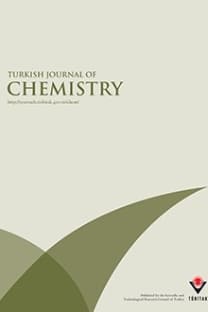Preparation of Palladium Composite Membranes on Pore Structure Modified and Non-Modified Supports by Electroless Plating Procedure
The effects of pore structure of the support on the plating morphology, thickness, and composition were investigated in an electroless plating procedure. Some of the plating studies were carried out directly on commercially available porous glass supports, while others were performed on modified supports. Two modification steps with alumina were applied on tubular supports. Formation of a 60-m m-thick layer on the modified support was detected by SEM analysis after the first 2 plating steps, while layer formation was not observed on the non-modified support. It was shown that the formation of a new layer started on the modified support, and a firm structure was obtained on the non-modified support after the fourth plating step. Pd film thickness was 100 m m for plating on the modified support. From EDS analysis, the plating composition on the modified support was 0.52% Al, 1.56% Si, and 97.92% Pd, and it was 2.52% Al, 3.28% Si, and 94.20% Pd on the non-modified support after the fourth plating step. The highest differential gain value was 10.33 mg/cm2 for the first plating on the modified support. The number of pores corresponding to the mesoporous region increased after the second plating and it decreased with subsequent plating steps for both supports. Pores with an average diameter of about 5500 nm were found in the structure following the fourth plating on the non-modified support, and pores with an average diameter of 800 nm were found basically in the structure after the fourth plating on the modified support.
Anahtar Kelimeler:
Electroless plating, palladium, composite membrane, support.
Preparation of Palladium Composite Membranes on Pore Structure Modified and Non-Modified Supports by Electroless Plating Procedure
The effects of pore structure of the support on the plating morphology, thickness, and composition were investigated in an electroless plating procedure. Some of the plating studies were carried out directly on commercially available porous glass supports, while others were performed on modified supports. Two modification steps with alumina were applied on tubular supports. Formation of a 60-m m-thick layer on the modified support was detected by SEM analysis after the first 2 plating steps, while layer formation was not observed on the non-modified support. It was shown that the formation of a new layer started on the modified support, and a firm structure was obtained on the non-modified support after the fourth plating step. Pd film thickness was 100 m m for plating on the modified support. From EDS analysis, the plating composition on the modified support was 0.52% Al, 1.56% Si, and 97.92% Pd, and it was 2.52% Al, 3.28% Si, and 94.20% Pd on the non-modified support after the fourth plating step. The highest differential gain value was 10.33 mg/cm2 for the first plating on the modified support. The number of pores corresponding to the mesoporous region increased after the second plating and it decreased with subsequent plating steps for both supports. Pores with an average diameter of about 5500 nm were found in the structure following the fourth plating on the non-modified support, and pores with an average diameter of 800 nm were found basically in the structure after the fourth plating on the modified support.
Keywords:
Electroless plating, palladium, composite membrane, support.,
___
- K. J. Bryden and J. Y. Ying, Materials Science and Engineering 204, 140-145 (1995).
- V. Jayaraman, Y. S. Lin, M. Pakala and R. Y. Lin, Journal of Membrane Science 99 89-100 (1995).
- Y. S. Cheng and K. L. Yeung, Journal of Membrane Science 182, 195-203 (2001).
- O. Altinisik, M. Dogan and G. Dogu, Catalysis Today 105, 641-646 (2005).
- Z. Shi, S. Wu, J. A. Szpunar and M. Roshd, Journal of Membrane Science 280 705-711 (2006).
- V. H¨ollein, M. Thornton, P. Quicker and R. Dittmeyer, Catalysis Today 67, 33-42 (2001).
- Y. Huang and R. Dittmeyer, Journal of Membrane Science 282, 296-310 (2006).
- K. L. Yeung, R. Aravind, J. Szegner and A. Varma, Studies in Surface Science and Catalysis 101, 1349 (1996).
- R. S. Souleimanova, A. S. Mukasyan and A. Varma, Journal of Membrane Science 166, 249-257 (2000).
- S. Uemiya, T. Matsuda and E. Kikuchi, Journal of Membrane Science 56, 315-325 (1991).
- Z. Y. Li, H. Maeda, K. Kusakabe, S. Morooka, H. Anzai and S. Akiyama, Journal of Membrane Science , 247-254 (1993).
- S. N. Paglieri and J. D. Way, Separation and PuriŞcation Meth. 31, 1-6 (2002).
- H. Gao, J. Y. S. Lin, Y. Li and B. Zhang, Journal of Membrane Science 265, 142-152 (2005).
- D. A. P. Tanaka, M. A. L. Tanco, S. Niwa, Y. Wakui, F. Mizukami, T. Namba and T. M. Suzuki, Journal of Membrane Science 247, 21-27 (2005).
- B. K. R Nair, J. Choi and M. P. Harold, Journal of Membrane Science 288, 67-84(2007).
- B. K. R. Nair and M. P. Harold, Journal of Membrane Science 290, 182-195 (2007).
- ISSN: 1300-0527
- Yayın Aralığı: Yılda 6 Sayı
- Yayıncı: TÜBİTAK
Sayıdaki Diğer Makaleler
Jabbar KHALAFY, Rolf H. PRAGER, Ni Made PUSPAWATI
Synthesis and Characterization of New Tridentate Iminooxime Ligands and Their Co(III) Complexes
Hasene MUTLU and Gazi İREZ, Gazi İREZ
Production of (S)-(-)-1-(1´-Napthyl) Ethanol by Rhodotorula glutinis Isolate Using Ram Horn Peptone
Esabi B. KURBANOĞLU, Kani ZİLBEYAZ, Namudar I. KURBANOĞLU
Gürsoy Özlem KOL, Haydar YÜKSEK
Nuran YAYLI, Osman ÜÇÜNCÜ, Nurettin YAYLI
Devrim DEMİR DORA, Tanıl KOCAGÖZ, Filiz ÖNER
Khalil FAGHIHI and Zohreh MOZAFARI, Khalil FAGHIHI
